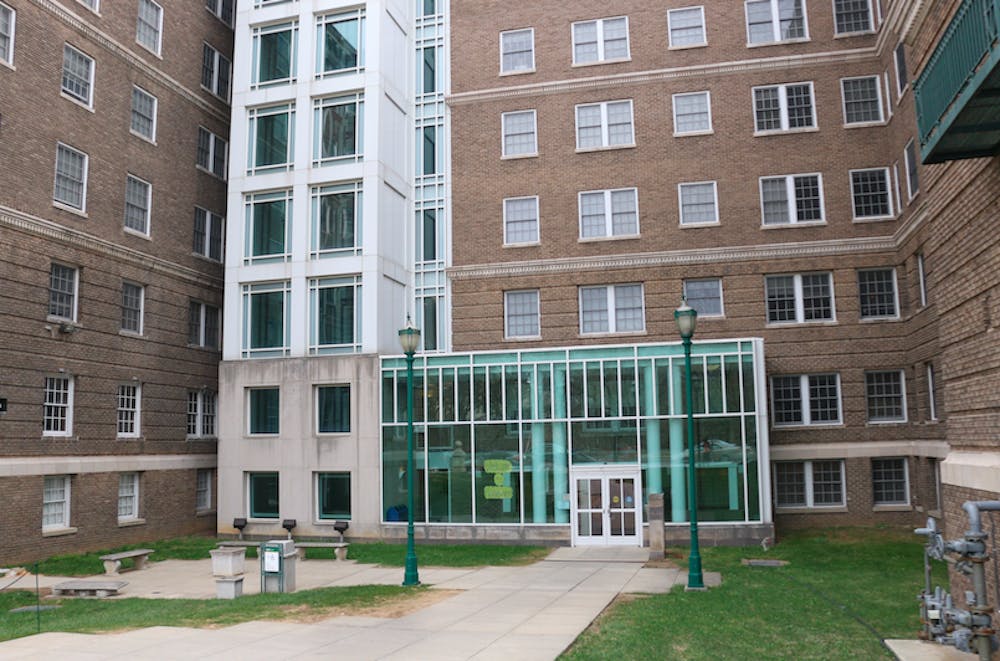Last year, the University created the Center for Student Success (CSS) in order to assist students by providing mentorship, coaching and community building resources.
The CSS works in collaboration with other offices to help students utilize the resources available at the University. The Center oversees a number of previously existing programs, many of which were part of the Office of Multicultural Affairs (OMA).
Irene Ferguson, associate dean of the CSS, said that the Center developed out of a need to restructure the diversity programs within OMA.
“The Center for Student Success came into existence about a year ago,” Ferguson said. “We were born out of a reorganization of how the University managed diversity and inclusion. There was a desire to bolster that.”
According to Ferguson, some of the programs at the CSS are geared towards helping students who may need extra support during their time at Hopkins.
For example, Hop-In aims to assist first generation or low-income freshmen with the transition to Hopkins and prepare them for the demands of
college life.
Ferguson explained that Hop-In students receive ongoing support throughout their four years at Hopkins in the form of peer mentorship, exposure to internship opportunities, social events and staff advising.
“They are working individually with a staff member, and... we help them in achieving their goals,” Ferguson said.
Blue Jays Realizing Individual Scholarly Excellence (RISE) also works specifically with freshmen. The program is an effort between the CSS and the Athletics Department and is designed to help student athletes manage their unique demands.
Through the CSS, RISE provides access to individualized academic planning, supplemental tutoring, mentorship and a first-year seminar series.
The Johns Hopkins Underrepresented in Medical Professions (JUMP) and the Mentoring Assistance Peer Program (MAPP) are both mentoring programs that work with freshmen.
JUMP helps provide mentorship for minorities and underrepresented groups in pursuing careers in the health or medical field. MAPP is a year-round program for first year students designed to help them build community, transition to the University, and foster academic success.
Junior Anne Li was involved in both JUMP and MAPP as a freshman. She is currently a MAPP leader, and reflected on her experiences as a mentee.
“As a freshman myself I didn’t really have anyone else to ask personal or just general questions to besides my mentor,” Anne Li said.
Anne Li explained that she feels the MAPP program is unique from other mentorship programs at the University because mentors provide individual mentorship throughout the year and help foster a sense of community for new students.
However, Anne Li said that the one potential downside of MAPP is that it consumes a lot of the mentors’ times.
“I think the biggest concern with it would be the time commitment because mentors do need to take the time out of their schedules to plan things, programs, events that our mentees do,” Anne Li said.
Not all programs within the CSS target freshmen. For example, the Second Year Experience (SYE) was created last year to assist sophomores.
Aaron Rutledge, director of the SYE program, stated that University looked at patterns among second-year students both nationally and within Hopkins.
“[Students] may or may not be familiar with the sophomore slump,” Rutledge said. “There’s research out there that says [sophomores] tend to feel abandoned by the University.”
Specifically, Rutledge noted that sophomores may face greater academic pressure as they move on to more advanced coursework, in addition to different financial and social pressures.
Rutledge also explained that the involvement in the group has grown since last year. Students can become involved by applying to join the SYE Cohort, a group of students who have access to SYE resources.
“I’m seeing growth in engagement, which I think signifies positive impact,” Rutledge said.
Sophomore Victoria Li, a member of the Cohort, confirmed Rutledge’s claim that SYE addresses student needs.
“[SYE] definitely fills this void of sorts and creates a sense of community,” Victoria Li said.
For sophomore Simon Zeng, SYE has helped him with his post-college plans.
“From my personal experience, the purpose of SYE is to pump up sophomores and get them aware of post-undergraduate life,” Zeng said.
He added that many students are unsure of what they will do after Hopkins.
“For the majority of the people at Hopkins, the whole purpose of the last five years of their life was to get into an undergraduate school... they’ve kind of lost sight of what’s after that,” he said.
As the CSS is new, upperclassmen did not have some of these resources as freshmen and sophomores.
Senior Aneesh Patankar believes other similar resources at the University may be easier to access than those at the CSS.
“Because I haven’t even heard of the CSS and it was founded so recently... I would think that other resources are more widely known and accessible than this one,” Patankar wrote in an email to The News-Letter.





